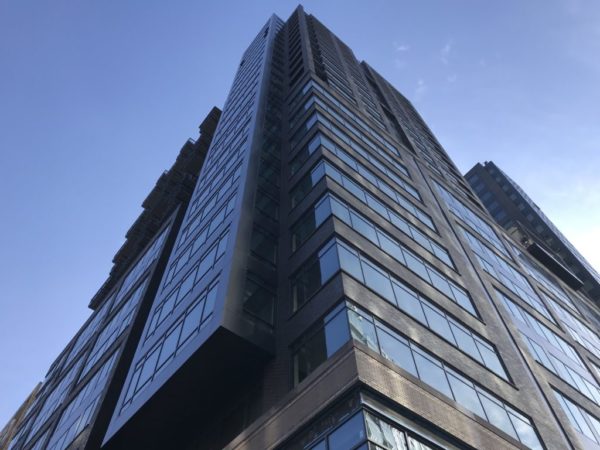New Arlington construction is helping the Commonwealth become more green.
Virginia is ranked eighth in the country for LEED-certified space per capita, the U.S. Green Building Council announced earlier this month. This is in large part because of Arlington County, which accounted for more than 15% of the newly LEED-certified buildings in the state in 2020.
Some newly-certified buildings in Arlington include:
- The Waycroft at 750 N. Glebe Road (LEED Gold, apartment)
- 400 Army Navy Drive (LEED Gold, apartment)
- Landbay D West at 3400 S. Clark Street (LEED Silver, apartment)
- 4040 Wilson Blvd (LEED Gold)
- 4000 N. Fairfax Drive (LEED Gold, apartment)
- 4250 N. Fairfax Drive (LEED Platinum, office)
- 1400 Crystal Drive (LEED Gold, office)
- 1777 N. Kent Street (LEED Silver, office)
- Jefferson Plaza at 1401 S. Clark Street (LEED Silver, office)
- Wilson School at 1601 Wilson Blvd (LEED Gold, K-12)
- 1440 N. Edgewood Street (LEED Gold, office)
- AHRI at 2311 Wilson Blvd (LEED Silver, office)
- Arlington County DHS Head Start at 2920 S. Glebe Road (LEED Gold, K-12)
There’s also one project that’s “confidential,” according to the U.S. Green Building Council.
Much of the increase in LEED-certified development is a result of the county’s voluntary green building program, which offers developers bonus density in exchange for their building meeting certain LEED certification standards, the council said.
“Arlington, far and away, is definitely the most progressive county in the state when it comes to certification,” says Mark Bryan, U.S. Green Building Council’s director for the National Capital Region. “That’s really because of [county] policy, which is one of the first and most successful voluntary incentive programs in the country.”
LEED certification is, admittingly, a bit complex. It’s essentially a system of points that are given for adhering to meeting certain standards mainly focused on energy, water waste, indoor air quality, transportation, materials, and site selection of the building.
The highest certification is LEED Platinum, followed by Gold, Silver, and Certified.
Just this past December, the county updated its program so that buildings now need to meet LEED Gold certification standards to receive the bonus density incentive.
County zoning ordinances place density and height restrictions on developments. Bonus density means they can add additional space to the development that they wouldn’t otherwise be allowed to have.
The reason the county wants more LEED-certification buildings is, as noted in a December 2020 report, to lower carbon emissions.
“The Green Building Incentive Policy is the primary tool currently available to encourage the private sector to reduce energy use and greenhouse gas emissions in new construction to help achieve Arlington’s long-term carbon emission goals,” reads the report.
Bryan says the county is succeeding in its goals because they are trading something that developers want.
“Arlington has done this quite successfully by providing something that’s extremely valuable to developers, particularly those in Northern Virginia,” says Bryan. “And that’s bonus density… and height.”
Offering bonus density is also something the county has done to encourage more affordable housing construction.
In Arlington, the structures receiving LEED certification in 2020 included six office buildings, five apartment buildings, two schools, and one retail building.


